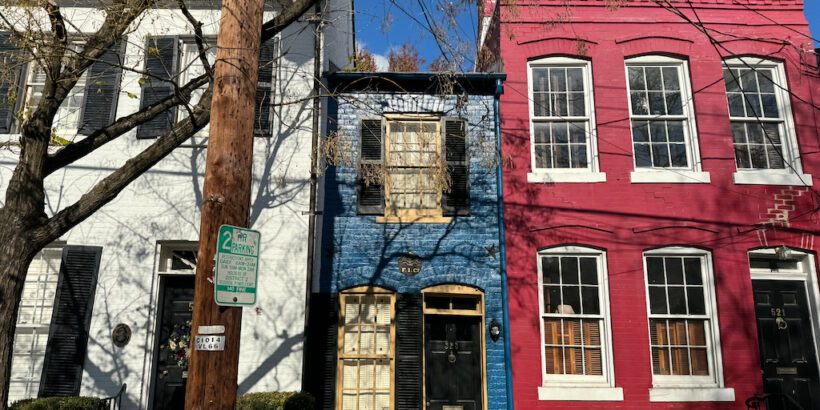Exploring cityscapes always fascinates me, especially when encountering diverse architectural styles.
Whether it’s the charming gingerbread cottages of Martha’s Vineyard or the classic federalist row houses on Acorn Street, there’s always a new and intriguing type of architecture to discover.
During my recent trip to Alexandria, VA, I stumbled upon something unique – a spite house. Let’s delve into what spite houses are and take a closer look at the one in Alexandria.
What is a “spite house?”
Spite houses, these peculiar dwellings, are crafty little creations intentionally designed to vex or inconvenience neighbors.
The origin of spite houses often lies in retaliatory motives, as disgruntled people use these structures to settle disputes and establish residential dominance.
These structures take various forms, ranging from whimsically shaped or strategically positioned buildings to purposefully obstructive features that convey a message without the need for words.
In the annals of spite houses, the “Skinny House” in Boston, Massachusetts, is a notable exemplar.
According to legend, it arose when a mid-19th-century feud between two brothers over inherited land reached its pinnacle. The elder brother gobbled up the inheritance and constructed a large residence, relegating a narrow strip for the younger sibling’s dwelling.
In a retaliatory act of architectural defiance, the younger brother birthed the Skinny House—an edifice that blocked his brother’s sunlight and view.
Alexandria, Virginia, has its own version of this and it’s called the “Hollensbury Spite House.”
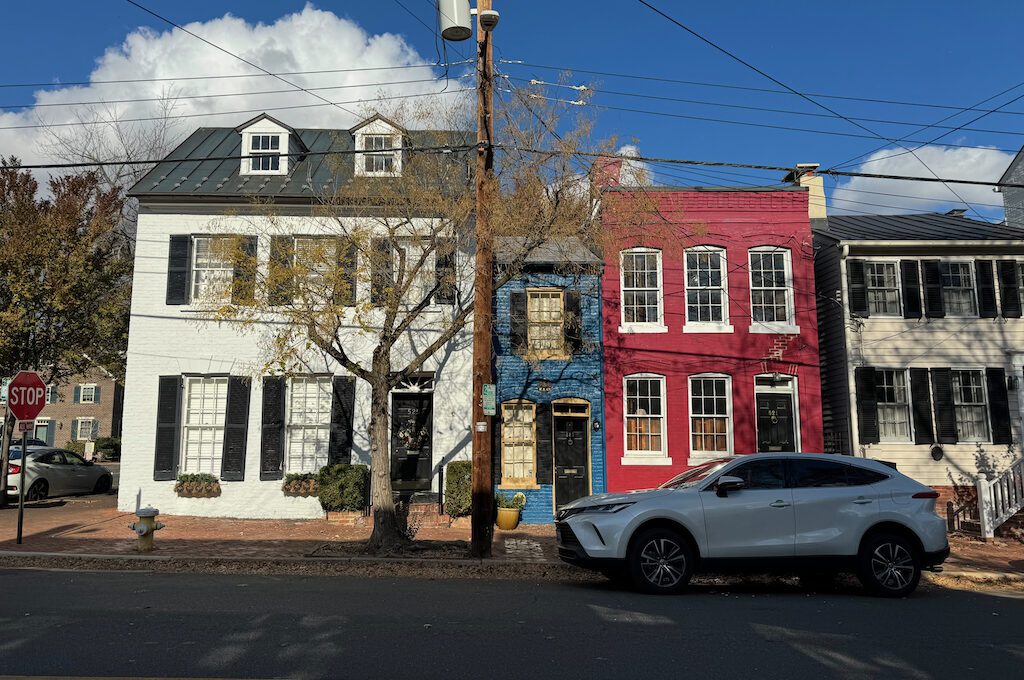
The Hollensbury Spite House background
According to lore, the construction of the dwelling in 1830 is attributed to John Hollensbury, a brick maker hailing from Alexandria, Virginia.
Residing in a residence erected in 1780 adjacent to the alley, Hollensbury’s motivation for erecting the infamous Spite House is shrouded in three distinct narratives.
The most widely circulated account suggests that Hollensbury’s vexation stemmed from persistent loitering in the alley adjacent to his residence.
Compounded by the damage inflicted by horse-drawn wagons, their wheel hubs leaving unsightly gouges on the side of his home, Hollensbury took decisive action.
In 1830, fueled by frustration, he acquired the alley at 523 Queen Street for the sum of $45.65 and, as an act of spite, erected the small dwelling.
A contrasting narrative posits that Hollensbury’s camaraderie with a neighboring friend soured when he grew weary of the constant harm inflicted by the friend’s carriage upon his residence during the 1820s, leading to the dissolution of their once-amicable relationship.
And finally, a third rendition of the tale suggests a more familial motivation behind the Spite House’s construction. In this version, Hollensbury purportedly built the dwelling as a playhouse for his two daughters, with one of them eventually residing in the house as an adult.
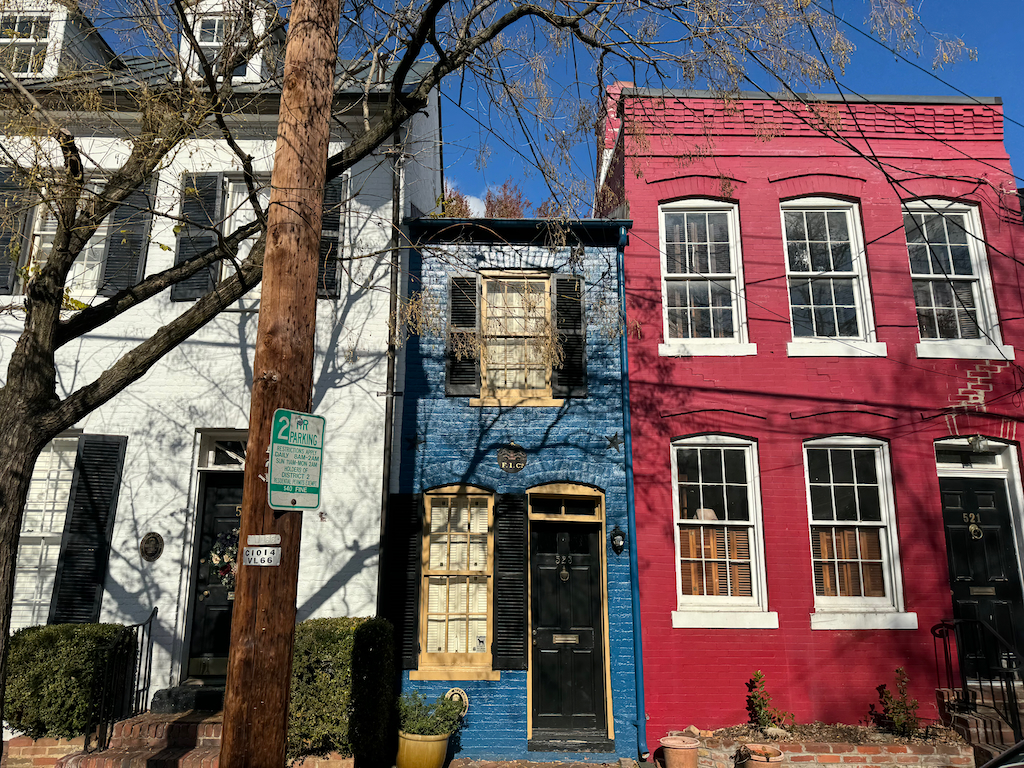
Initially, this diminutive Spite House shared a connection with Hollensbury’s original residence, but over time, they underwent a physical separation, acquiring distinct addresses.
In a noteworthy chapter of its history, the Hollensbury Spite House transitioned from residential quarters to serving as a school before reverting to its residential roots.
Fast forward to 1990, when businessman Jack Sammis stepped into the narrative by acquiring the property for $130,000.
Uncertain about its future utility, Sammis eventually enlisted the expertise of designers to revamp the interior. The focus of the renovation aimed at accentuating original details such as wooden floors and brick walls, while relocating heating and cooling systems.
Navigating the challenge posed by the diminutive front door, Sammis had to curate smaller furniture selections from local antique stores, lending a unique character to the Spite House’s interior.
Nestled behind the house, a petite garden and patio serve as a charming backdrop, and when the homeowner married a commercial real estate agent, they celebrated their nuptials in this picturesque space.
Presently, the house has evolved into a weekend retreat for its owners, offering a tranquil escape during the balmy summer months. The residence also operates as a bed and breakfast, weaving diverse stories into its history.
The Spite House also reportedly served as an experimental abode for a couple with aspirations of circumnavigating the globe on a cruise ship. Opting to test their tolerance for confined living spaces, they rented the property, adding yet another distinctive chapter to the residence’s eclectic narrative.
Earning its moniker as the “Skinniest House in the United States,” this unique abode boasts dimensions of 7 feet 6 inches in width and 25 feet in depth, situated on a compact lot measuring just 356 square feet.
This includes the slender two-story house spanning 350 square feet, complemented by a walled rear garden and patio area, which unfolds within a snug 7 feet wide and 12 feet deep enclave.
As of the last available data in 2022, the land itself carries a valuation of $381,000, while the building holds an appraised value of $220,000. Combining these elements yields a total property value surpassing the $600,000 mark.
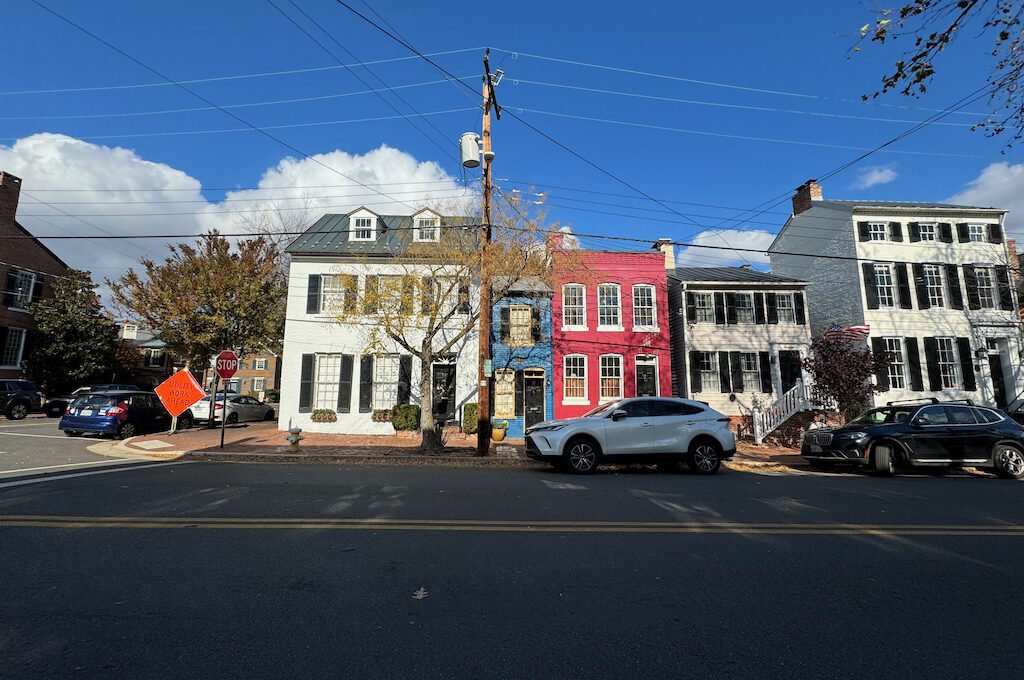
The Hollensbury Spite House is a frequent stop on guided tours of the Alexandria Historic District, which is a beautiful area to check out. The house has also been featured on a lot of different national media outlets, including the Oprah Winfrey Show and also CBS News, among many others (see the video below that shows the Spite House interior).
A closer inspection of the front facade reveals an intriguing detail in the form of a cast iron fire shield. This nineteenth-century addition signifies that the property owner had, at that time, paid the local fire department for their services in extinguishing any potential fires at the residence.
Also, positioned discreetly in the bottom right corner of the front window is a distinctive “dog finder” sign. This small but impactful placard that reads: “In case of a fire, please rescue dog.” I had never seen one of those before but thought it was pretty cool.
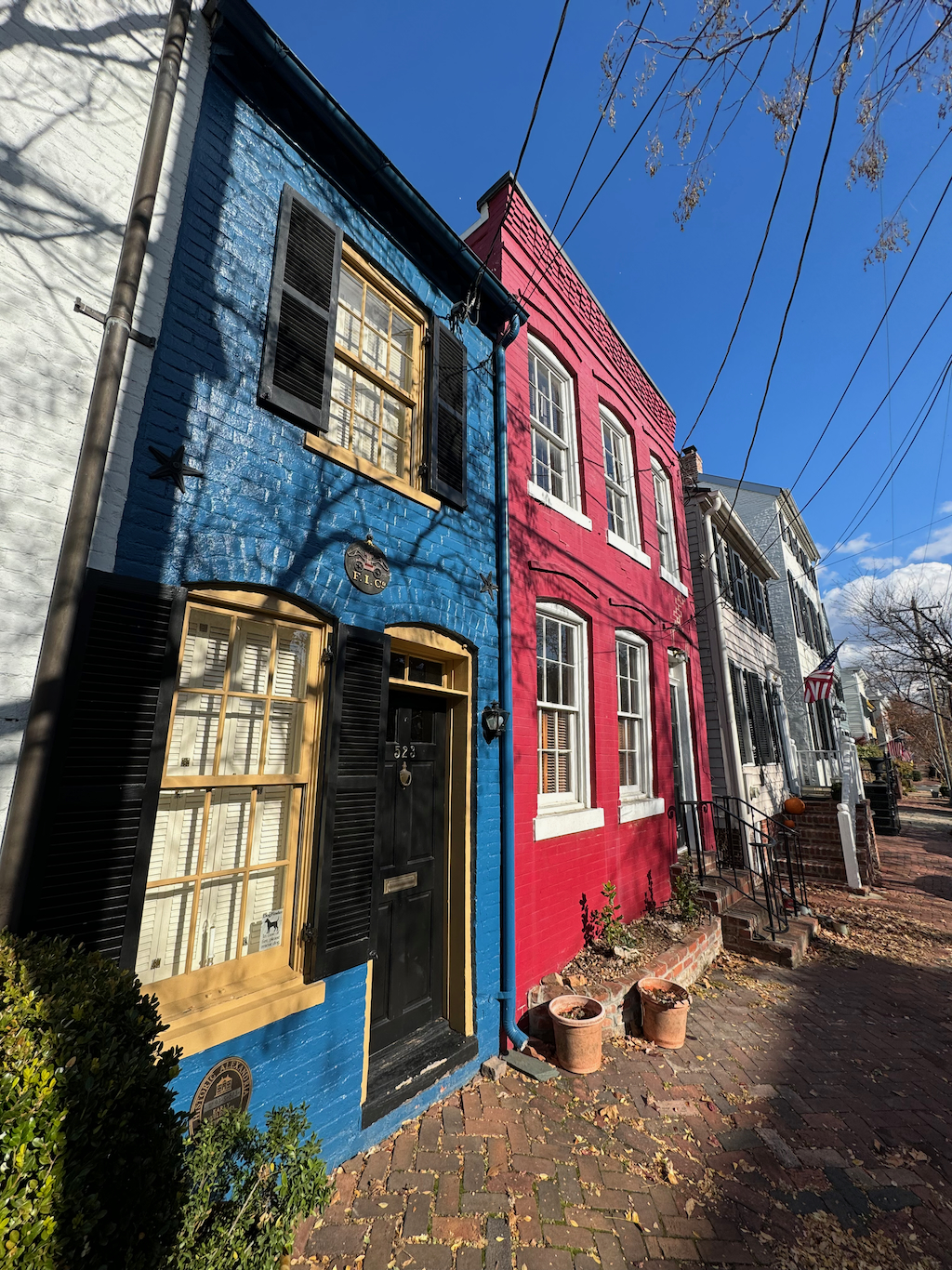
If you find yourself with some free time, I strongly recommend paying a visit. The area boasts captivating cobblestone streets and colonial buildings that exude an enchanting charm, transporting you back in time.
Notably, the Skinniest House is just one of four spite houses in Alexandria, with others situated on Prince Street and King Street. Each of these architectural curiosities dates back to the 1800s, with the King Street house erected in 1812.
Final word
Discovering spite houses for the first time was truly intriguing. What added to the fascination was the realization that Alexandria is home to several of these architectural oddities, with counterparts scattered across other cities and even internationally.
The Skinniest House, with its easily overlooked stature, conceals a captivating history. Its unassuming size might make it easy to miss, so be sure to consult a map when exploring the area. Although a brief visit suffices due to its size, the experience is well worth it. Take a moment to include it in your exploration of the charming historic district of Alexandria.
Daniel Gillaspia is the Founder of UponArriving.com and the credit card app, WalletFlo. He is a former attorney turned travel expert covering destinations along with TSA, airline, and hotel policies. Since 2014, his content has been featured in publications such as National Geographic, Smithsonian Magazine, and CNBC. Read my bio.

